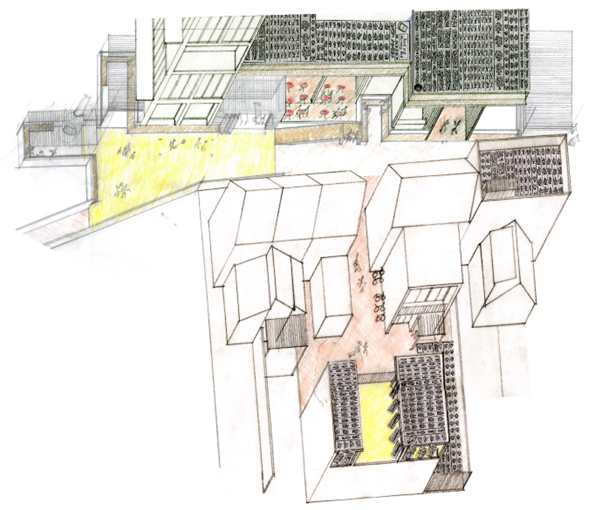Master of Architecture
Master of Architecture-Studio 2: Re-visiting the City

Re-Visiting the city
In Re-Visiting the city, students were asked to experiment with an architecture belonging to the Anthropocene Epoch, an architecture that aims to repair some of our negative impacts on the earth and biosphere. The studio brief was for a hotel in Brighton.
Ludwig Mies Van de Rohe famously claimed that architecture belongs to the epoch, not even to time and that the epoch is the only thing that architecture can express. And in this time, and for some time; including Mies’s time; human activity and significantly building, has had a major impact on the planet’s climate and ecosystems, leading to what has been defined as the Anthropocene Epoch, our current time in Earth’s history.
The studio task draws on over twenty years of international design research undertaken by Katrin Bohn and Andre Viljoen exploring how low energy architecture and food productive landscapes can create cities of more of experience with less consumption. Students worked on a site in the centre of Brighton and Hove, formed by a spine running along Church Street which traverses Brighton’s topography between Valley Gardens to the east and St Nicholas’s Church to the west.
This is the proposition put to students:
“Setting your work in a near future scenario, in transition to a circular economy, we will imagine cities less dominated by the private car, enabling the spaces between buildings to be reconsidered. We will do this by exploring relationships between food productive landscapes and architecture, using the concept of Continuous Productive Urban Landscape. A CPUL is an urban (green) infrastructure linking food-producing sites of varying scales and operating types with other (green) open spaces through and across towns or cities, connecting those parcels of land to the citizens as well as to other food system activities and ultimately to the rural landscape.
The CPUL concept follows a systemic approach and proposes that urban agriculture can contribute to more sustainable and resilient food systems while also adding beneficially to the spatial and socioeconomical quality of the urban realm.
Landscape will be thought about as an urban network, within which you will focus on the design of a new hotel and a supporting food productive landscape. The hotel typology provides the opportunity to explore fundamental architectural questions about repetition and discontinuity, arising from the need to accommodate the most private and most shared of spaces, bedrooms and ballrooms. A mico-city, within a city renowned as a resort.
Spartan Opulence.
There is a particular strand of contemporary European architecture that in spirit at least has many of the qualities that lend themselves to a resource efficient and sensual architecture. Looking back some years foundational examples would be the Smithson’s Upper Lawn Pavilion (1959-62) or Bernard Rudofsky and Jose Antonio’s House in Malaga (1968-72). Larger more recent examples include Flores I Prats Sala Becket (2014) or Grafton Architects and O’Mahony Pike’s ESB Headquarters (2022).